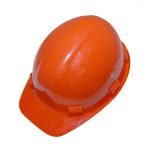Accidents at construction sites often involve construction workers, but sometimes a person who is not involved in the construction work is injured at a construction site. Since it is not always clear who is responsible for an accident, an injured person may pursue claims against multiple construction companies and the premises owners.
 The Supreme Court in New York County recently considered defense motions for summary judgment in a case in which an employee working on the second floor was injured while leaving through a construction area on the first floor.
The Supreme Court in New York County recently considered defense motions for summary judgment in a case in which an employee working on the second floor was injured while leaving through a construction area on the first floor.
The plaintiff in Reaves v. Lakota Construction Group, Inc. was an employee of a BMW franchisee working on the second floor of a building leased by a business called 214-27 Northern Boulevard, LLC (214-27). The only principals of 214-27 were also the only principals of the plaintiff’s employer. They were upgrading the building, including working on the façade. There was an agreement with Bergon Construction Corp. to be the construction manager, and Bergon found Lakota Construction Group, Inc. to perform some of the renovations.
No car sale business was being conducted on the first floor during the renovations. Lakota instead stored equipment, materials, and supplies there. Its crew left the site by 3:30 each afternoon. Although the construction crew was aware there were employees working upstairs, it did not separate work areas from non-work areas or create a path for the second-floor employees to traverse.
It was about 5:00 or 5:30 when the plaintiff left work on the day of the accident, but it was already dark. When he came down the stairs, he found the first floor was completely dark, and he did not know where the light switch was. He tried to go out his usual exit but found the door was locked. He then walked through the construction site to get to another door. He slipped on some Masonite and then tripped on a pile of panels. He was injured in the fall and ultimately received workers’ compensation benefits through his employer.
The plaintiff filed suit against 214-27, Bergon, and Lakota. The defendants each moved for summary judgment.
The court rejected 214-27’s argument that the claim against it was prohibited by NY Labor Code § 11, which provides that workers’ compensation is the exclusive remedy of an employee against an employer for claims arising from a work injury. The court found that the fact the two companies shared principals was insufficient to establish that they were alter egos. There was sufficient evidence that the companies were separate to raise triable issues of fact.
214-27 also argued that its allowing construction workers to work on the first floor was not the proximate cause of the accident. The court declined to find it was not the proximate cause of the accident as a matter of law, noting that 214-27 hired construction workers and allowed them to put materials throughout the first floor without ensuring there was a safe path for the employees on the second floor. 214-27 also argued that the plaintiff’s carelessness was the proximate cause of the accident because he walked through a known construction site in the dark. The court acknowledged that reasonable jurors may assign fault to the plaintiff, but it held that it could not determine him to be the sole proximate cause at the summary judgment stage.
214-27 also argued that it did not have actual or constructive notice of a dangerous condition. The court noted that, although one of the principals testified he did not know certain staff was working on the second floor, one of the employees testified that the principal had been on the premises with him when the construction was going on and while staff was working on the second floor. The court noted that this discrepancy raised an issue of fact as to whether 214-27 had notice. If the leaseholder did know there were people working on the second floor, it would have a non-delegable duty to maintain the premises in reasonably safe condition and provide the plaintiff with a reasonably safe means to enter and exit.
Bergon argued that it did not have a duty to the plaintiff and that it did not contribute to the accident. The principal of the leaseholder testified, however, that it was his understanding that Bergon was responsible for safety and could stop the work if conditions were unsafe. Lakota stated that Bergon was the general contractor and provided direction. Lakota also stated that, when the two companies worked together previously, Bergon was responsible for site safety. The court found that there were triable issues of fact as to Bergon’s responsibilities. The court noted that probable cause was also an issue for the jury.
Lakota argued it had a contract with 214-27, but no duty to the plaintiff. The plaintiff argued that his claim was not based on a theory of third-party beneficiary status, but it was instead based on Lakota’s own negligence in failing to barricade the construction area, failing to leave the lights on, and failing to tape the Masonite down. Lakota argued that it could not foresee the plaintiff being in the area, but the court rejected this argument. The court noted that Lakota knew there were people working upstairs who stayed after Lakota’s workers left for the day and that those people would have to leave through the first floor. Lakota did not mark the work area or make any area off-limits. Additionally, one of Lakota’s workers apparently turned the lights off. Based on these facts, a reasonable jury could find Lakota caused or contributed to the accident.
The court found the allocation of fault among the parties was properly left to the jury and denied summary judgment as to all defendants.
This case illustrates how several parties can bear some fault in an accident at a construction site. One construction company may have liability for creating the hazard, while another construction company may have liability because it was responsible for site safety. The premises owner has a duty to maintain the premises in a safe condition, even during construction. In a case like this one, in which the responsibilities are unclear, summary judgment is inappropriate.
New York construction accident attorney Nicolas Rose understands the importance of identifying all potential defendants. If you have been injured at an unsafe construction site, call us today.
The Law Offices of Nicholas Rose, PLLC offers free consultations. Call 1-877-313-7673.
Additional Resources:
Reaves v. Lakota Construction Group, Inc., June 14, 2016, Supreme Court of the State of New York, New York County
More Blog Entries:
Auqui v. Seven Thirty One Ltd. Partnership and Filing Injury Lawsuit Against an Employer, December 24, 2013, New York City Injury Lawyer Blog






